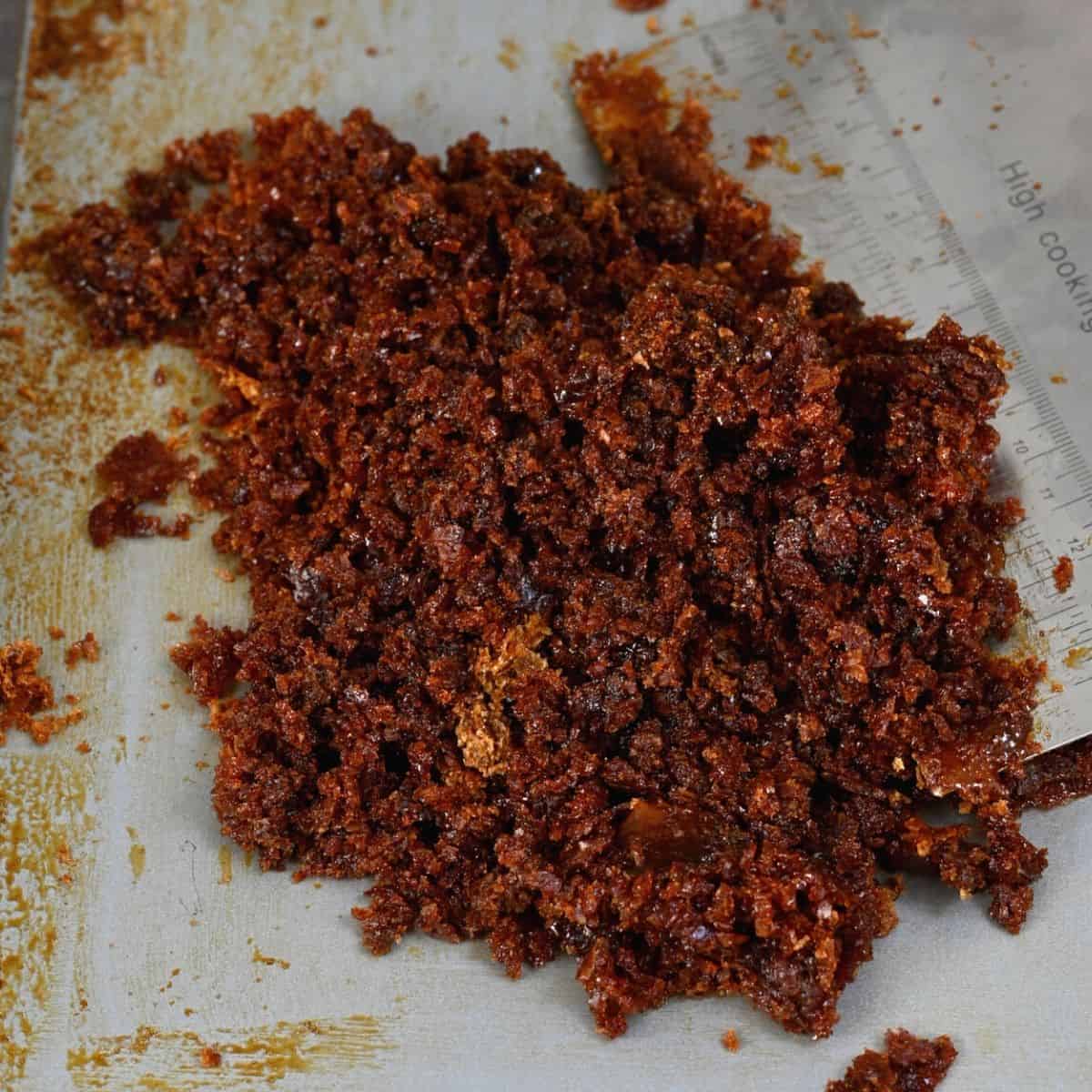The Science Behind Cane Sugar Processing: Just How Sweet Taste is Improved
The Science Behind Cane Sugar Processing: Just How Sweet Taste is Improved
Blog Article
A Comprehensive Guide to the Environmental Impact and Sustainability Practices in Walking Stick Sugar Handling
The environmental influence of walking stick sugar processing presents an intricate variety of difficulties that warrant careful examination. From dirt destruction and too much water usage to the carbon impact connected with cultivation and manufacturing, the repercussions of conventional techniques are far-ranging. What details techniques can be executed to strike an equilibrium in between performance and ecological stewardship?
Introduction of Walking Stick Sugar Processing
Walking cane sugar processing entails a series of organized steps that change sugarcane into polished sugar. At first, harvested sugarcane is transferred to refining facilities, where it undertakes cleaning up to remove dirt and particles. Following this, the walking stick is squashed to draw out juice, which is then cleared up by removing pollutants through home heating and the enhancement of lime.
The clarified juice goes through dissipation, where water is gotten rid of to concentrate the sugar content. These crystals are separated from the staying syrup using centrifugation, resulting in raw sugar.
The end product is after that dried and packaged for distribution. Throughout this entire procedure, maintaining efficiency and quality assurance is important to ensure the sugar meets market requirements. Each action in walking cane sugar processing not just adds to the final product but likewise has effects for source use and waste generation, setting the phase for conversations on sustainability and ecological impacts linked with sugar production.
Environmental Challenges of Production
The production of cane sugar provides several considerable environmental obstacles that warrant focus. One main issue is the substantial usage of agrochemicals, including pesticides and fertilizers, which can lead to soil deterioration, biodiversity loss, and contamination of regional water resources. The overflow from sugarcane fields frequently brings these chemicals into nearby communities, interrupting water life and impacting the health of communities reliant on these water bodies.
An additional obstacle is the high energy consumption related to sugarcane handling. The boiling and refining stages require significant warmth, mostly generated by melting nonrenewable fuel sources, contributing to greenhouse gas emissions. In addition, the extensive land area needed for sugarcane growing can result in deforestation and habitat damage, more exacerbating environment change and harmful wildlife.
Additionally, the labor methods in some regions increase moral concerns, as employees may encounter bad working conditions and insufficient salaries. This circumstance usually continues a cycle of poverty in regional communities. Cane Sugar Processing. Resolving these environmental obstacles is essential for creating more lasting methods in walking cane sugar production, inevitably benefiting both the atmosphere and the areas included in this market
Water and Land Usage Impact
Water sources and land utilization are essential elements in the walking stick sugar sector that substantially influence the environment. The farming of sugarcane needs considerable water input, with price quotes suggesting that it can eat as much as 2,000 litres of water per kilogram of sugar generated. This intensive use water frequently causes depletion of regional water resources, impacting not just the sugarcane haciendas but also surrounding ecological communities and communities that count on the very same water sources for farming and residential usage.

In addition, land use for sugarcane growing can cause deforestation and the conversion of all-natural environments into monoculture haciendas. This method lessens biodiversity, interrupts neighborhood communities, and adds to soil degradation. The development of sugarcane fields typically intrudes on valuable agricultural land, developing competition for resources in helpful resources between food and biofuel production.
Sustainable techniques, such as optimizing irrigation methods and implementing crop turning, are necessary to reduce these influences. By taking on much more effective water usage and land administration approaches, the cane sugar market can minimize its eco-friendly footprint, making sure an equilibrium in between farming efficiency and ecological conservation.
Greenhouse Gas Emissions
Greenhouse gas emissions represent a considerable ecological problem within the cane sugar processing industry, especially as agricultural methods increase to satisfy worldwide need. The growing of sugarcane, a plant that grows in exotic environments, counts greatly on artificial plant foods and pesticides, which add to laughing gas exhausts. In this website addition, land-use adjustments, consisting of logging for brand-new sugarcane haciendas, launch co2 kept in plants and soil.
Throughout processing, energy intake is an additional significant source of greenhouse gas exhausts - Cane Sugar Processing. Several sugar mills use nonrenewable fuel sources to power machinery and create heat, resulting in substantial carbon footprints. Additionally, the transport of raw sugarcane and completed products includes layers of discharges through gas combustion in vehicles
This involves examining current farming practices, processing approaches, and transport systems to identify locations for renovation and mitigation. Attending to greenhouse gas exhausts is important for promoting an extra lasting walking cane sugar industry in an altering environment.

Sustainable Practices and Innovations
Lasting methods and developments are significantly essential in the walking stick sugar handling market as stakeholders look for to minimize environmental influences while preserving performance. One considerable advancement is the execution of integrated plant management, which maximizes resource usage by integrating soil monitoring, pest control, and plant rotation methods. This approach improves return while reducing chemical inputs and maintaining soil health and wellness.
Moreover, the fostering of renewable energy sources, such as biomass from sugarcane deposits, has actually acquired grip - Cane Sugar Processing. By converting waste products right into energy, processing centers can reduce their reliance on nonrenewable fuel sources, thereby reducing greenhouse gas exhausts
Water management techniques have likewise seen renovations with the recycling and reusing of water in handling plants, dramatically decreasing freshwater intake. Technologies in modern technology, such as precision agriculture, allow farmers to monitor plant health and resource use more efficiently, making sure lasting farming practices.
Additionally, accreditation programs like Fair Profession and Rain forest Partnership urge ecologically liable farming techniques and advertise social equity within the supply chain. By welcoming these lasting Learn More practices and innovations, the cane sugar handling market can improve its durability and add favorably to environmental stewardship.
Verdict
The ecological influence of walking cane sugar handling offers substantial obstacles, consisting of dirt deterioration, high water usage, and greenhouse gas discharges, together with ethical issues associated with labor practices. Attending to these issues with lasting methods, such as integrated crop monitoring, renewable resource adoption, and water recycling, is vital. By promoting environmentally liable and socially fair methods in sugar production, the sector can minimize its negative impacts, ensuring an extra lasting future for both environments and communities associated with this sector.
Walking cane sugar handling involves a collection of organized actions that change sugarcane into polished sugar. Each step in cane sugar handling not only adds to the final item but additionally has effects for resource use and waste generation, setting the phase for discussions on sustainability and environmental influences linked with sugar production.
Greenhouse gas emissions stand for a substantial environmental problem within the walking stick sugar handling market, specifically as agricultural techniques expand to fulfill global need.Lasting methods and technologies are progressively vital in the walking stick sugar processing sector as stakeholders seek to minimize ecological impacts while keeping productivity.The environmental effect of cane sugar processing provides substantial challenges, consisting of dirt degradation, high water usage, and greenhouse gas emissions, along with moral issues associated to labor techniques.
Report this page